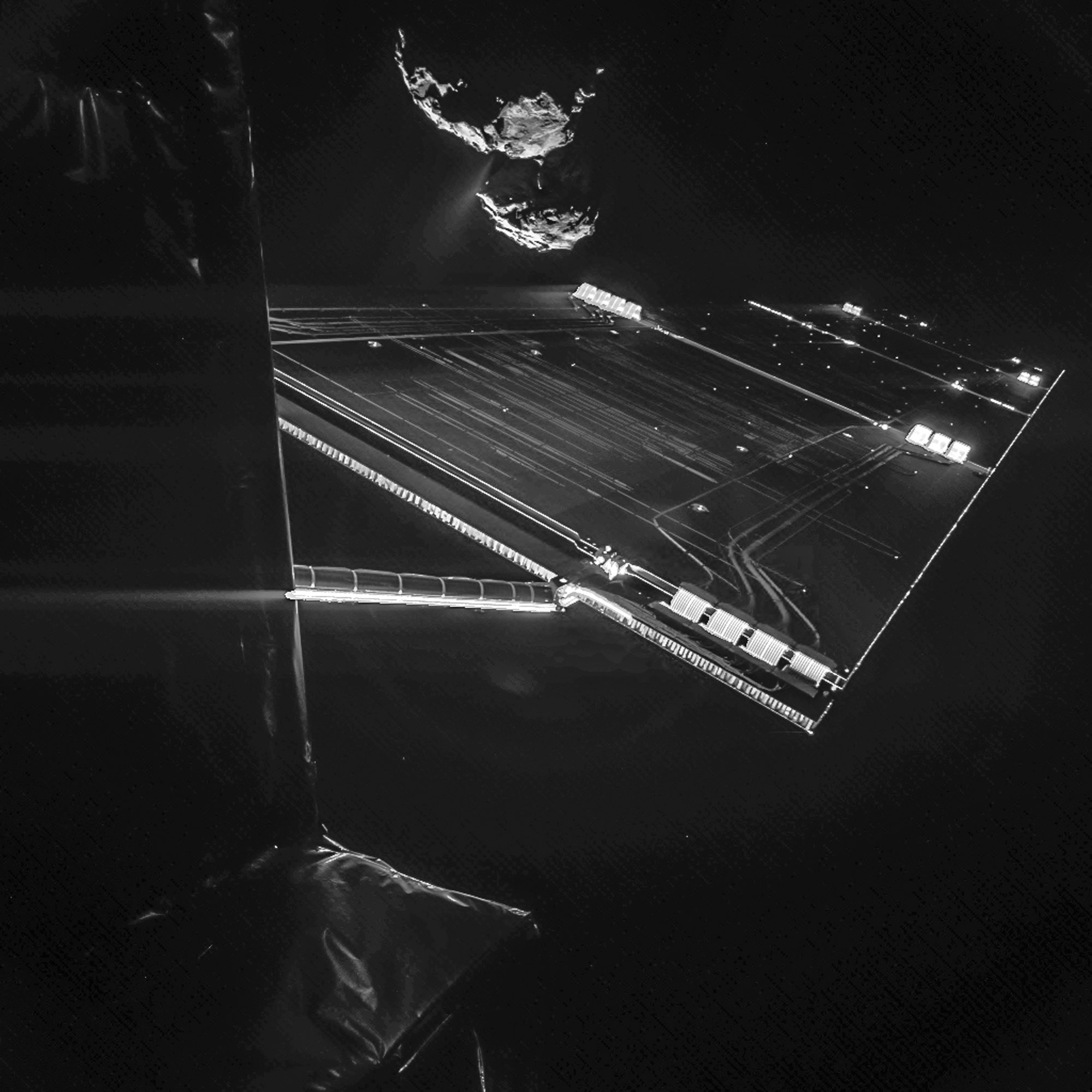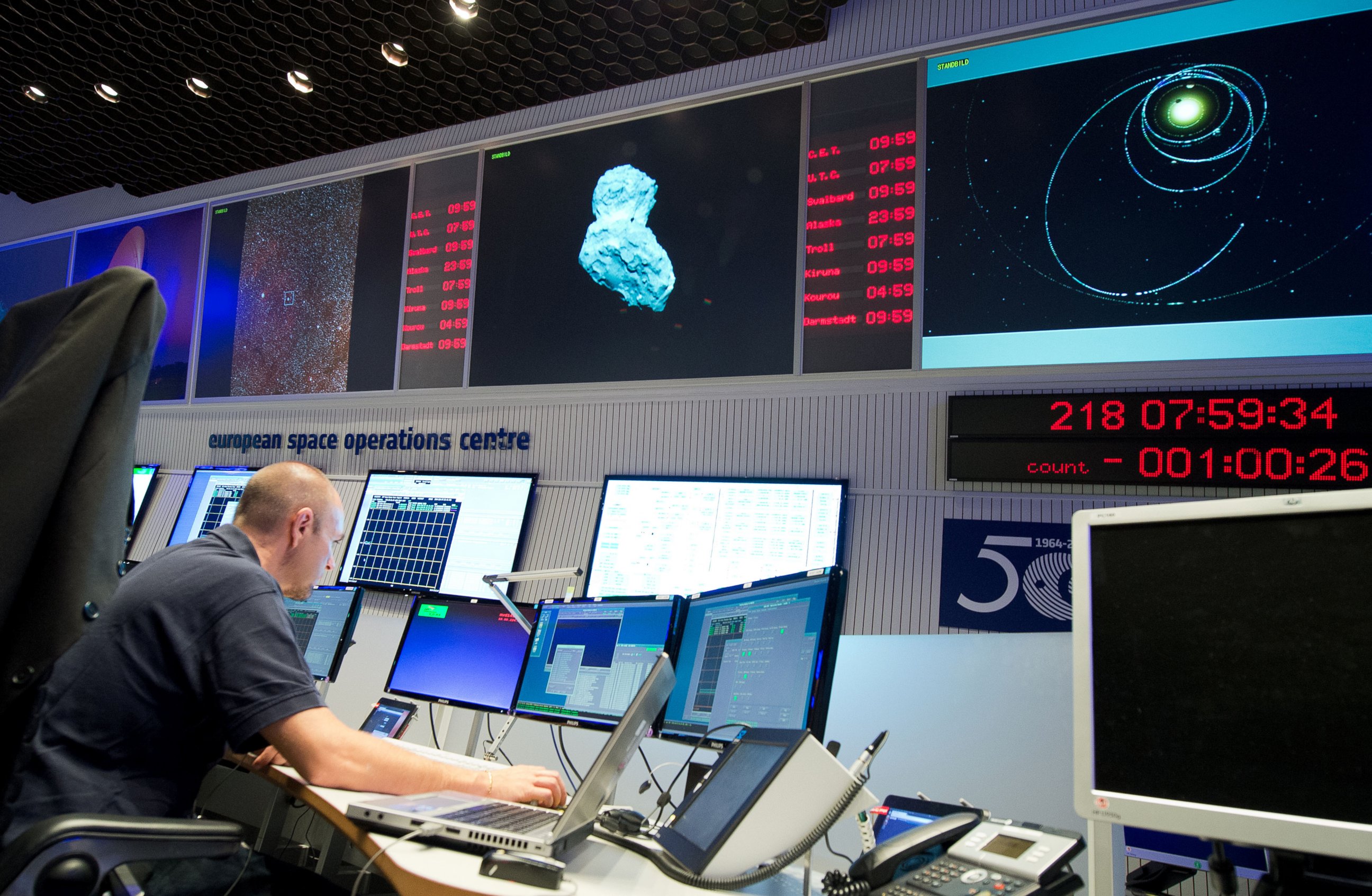Rosetta Mission's Philae Lander Is Closing in on a Speeding Comet
European Space Agency's probe is nearing historic touchdown.
— -- Rosetta already has gone where no other spacecraft has ever attempted to go before, becoming the first to orbit a comet -- in this case one that can move at more than 80,000 miles per hour.
Now, a probe is on a seven-hour journey to land on 67P, the comet shaped like a rubber duck that Rosetta has been chasing around the solar system like a cosmic pingpong ball for 10 years.
This mission has captivated even "Star Trek" Commander Captain Kirk -- prompting the actor who played him, William Shatner, to send his best wishes.
When Rosetta phoned home to the European Space Agency’s mission control in Darmstadt, Germany today, it took 28 minutes for the signal to reach Earth, traveling 317,520,679 miles.
The spacecraft is scheduled to land at 8:30 a.m. ET, and by 11 a.m. ET we will know if it hit its target and is functioning.
Phil Plait, an astronomer and author living in Boulder, Colorado, who writes the “Bad Astronomy” blog for Slate, said this mission is phenomenal in every possible way.
“There’s a little machine. It’s going to detach from the probe, itself, land physically on the comet and then take samples and investigate it right there on the surface," he said. "Never been done before."
Italian astronaut Samantha Cristoforetti planned to take time off from preparations for her launch to the International Space Station next week to watch this.
“It is incredibly exciting, a mission of firsts," Cristoforetti said. "There are so many things that have never been attempted before -- rendezvousing with a comet, attempting a landing, even technological firsts. Rosetta has gone all the way to 800 million kilometers from the sun. To give you an idea, the Earth is only 150 million kilometers from the sun.”
Rosetta certainly has a sense of humor about its mission -- even pausing for selfies with its target comet.

Once Philae lands, it will take some time to get the first pictures. ESA’s mission control will get a connection two hours after separation. Then, the lander will start sending data to the orbiter, after which it finally will be relayed back to Earth.
The information Rosetta will learn from this mission could change what we know about our universe, Plait said. After all, he added, this comet is one big time capsule -- “a four-and-a-half-billion-year-old time capsule telling us, 'Hey, what were conditions like when the Earth itself was just forming? That’s HUGE. We can learn so much about the ancient solar system by studying comets up close.”
Rosetta, launched 10 years ago from Europe’s Spaceport in Kourou, French Guiana, and has already defied the odds. In January, the spacecraft famously “woke up” after a 31-month-long hibernation period, tweeting, “Hello World.”

One can only imagine what Philae will tweet after it lands on Comet 67P.
How do you land on a comet? It’s tough when you don’t know what to expect -- and no one has done this before.
The trick is to find a smooth landing spot with no rocks and no slope, especially when the spacecraft is free-falling toward the comet, counting on its gravity to pull it to a safe touch-down.
If this succeeds, it doesn’t mean the end of the mission for Rosetta. It's just the halfway point, Cristoforetti said.
“It’s going to actually accompany this comet all the way on its path through the internal solar system as it approaches the sun," Cristoforetti said, "all the way to the closest point to the sun -- and it will accompany it as it heads back out.”




